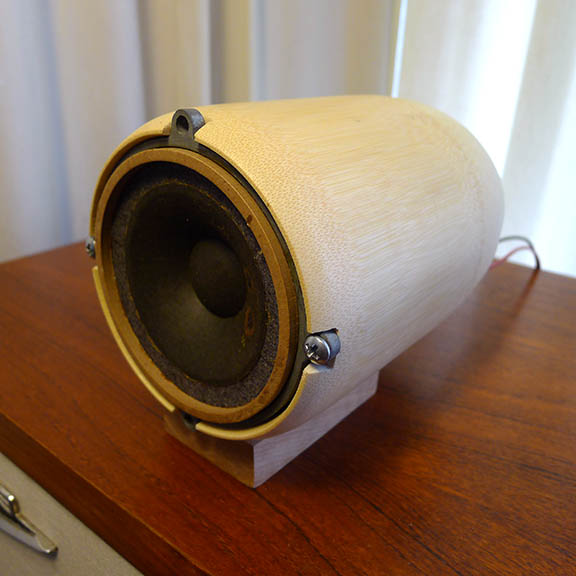drbiggles
I like to pull weeds.
Hey,
Well, thank you to Retrovert for the more coherent answer regarding heat and resistors!
I get it. I've gone in and out of my Bozak B302's so many times now, I'm going to have to fill the original holes with epoxy and re-drill. But I've got tons more issues than you do, I kinda expected it.
Mounting them in another cabinet to set on top of the existing speaker is very doable and it's something that can be un-done easily. Here's my similar solution in a recent project. I bought a pair of bamboo utensil cups at a local hardware store for 8 bux a piece. A little filing, a little drilling and you're done. I did have to use a drill press to get the pilot holes perfectly straight though, not a lot of margin for error there.

Biggles
Well, thank you to Retrovert for the more coherent answer regarding heat and resistors!
I get it. I've gone in and out of my Bozak B302's so many times now, I'm going to have to fill the original holes with epoxy and re-drill. But I've got tons more issues than you do, I kinda expected it.
Mounting them in another cabinet to set on top of the existing speaker is very doable and it's something that can be un-done easily. Here's my similar solution in a recent project. I bought a pair of bamboo utensil cups at a local hardware store for 8 bux a piece. A little filing, a little drilling and you're done. I did have to use a drill press to get the pilot holes perfectly straight though, not a lot of margin for error there.

Biggles


